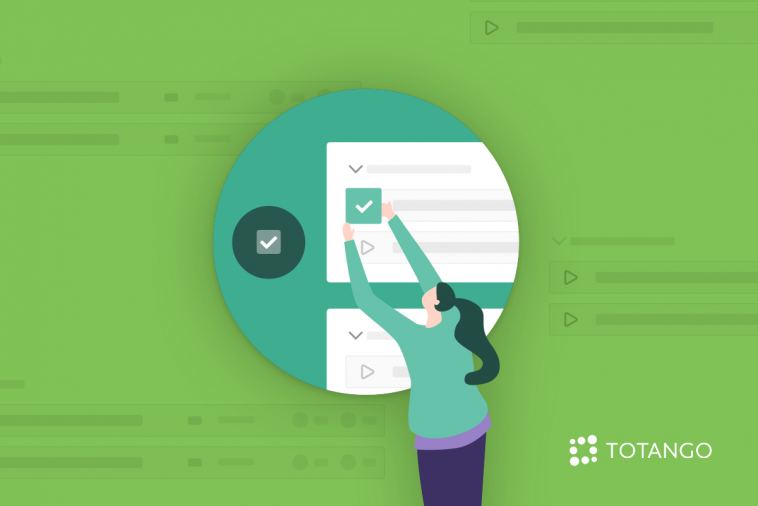- Like
- SHARE
- Digg
- Del
- Tumblr
- VKontakte
- Flattr
- Buffer
- Love This
- Save
- Odnoklassniki
- Meneame
- Blogger
- Amazon
- Yahoo Mail
- Gmail
- AOL
- Newsvine
- HackerNews
- Evernote
- MySpace
- Mail.ru
- Viadeo
- Line
- Comments
- Yummly
- SMS
- Viber
- Telegram
- JOIN
- Skype
- Facebook Messenger
- Kakao
- LiveJournal
- Yammer
- Edgar
- Fintel
- Mix
- Instapaper
- Copy Link
A key component of creating customer success is working with your customer to identify and organize mutual goals into a standardized customer success plan. Outcome success plans focus on capturing mutual objectives, documenting the steps toward achieving them, and sharing information between both clients and your own internal teams—driving interconnectivity and displaying progress through one easily accessed live portal.
Your customer success team can keep clients better informed on their progress, actively demonstrating the value obtained through your product. You can increase both customer satisfaction and customer delight as your clients feel well-engaged and cared for.
How to Create and Leverage an Outcome Success Plan
As our business landscape becomes increasingly digitized, competitors are more vocal than ever before in vying for customers’ business. With so many demands, it can become difficult for CS teams to stay aligned and on track without a clear plan of action. For example, a high touch customer who expects to see high value within the first year requires the CS team to track steps and stay up to date with progress updates—this is where outcome success plans shine.
Outcome success plans create a high level of trust and transparency between you and your client base by demonstrating that you understand their needs. These plans document established goals, show how your product will help achieve these goals, and should provide ongoing progress updates through a live online portal, leaving no one in the dark.
Here’s a step-by-step guide on how to create an outcome success plan:
- Define your plan
- Share your plan with customers
- Define your escalation plan
- Document and capture new initiatives as they arise
1. Define Your Plan
Early in the customer journey, it is important to define client goals and KPIs to set the foundation for your strategy and how you will measure success.
To define the goals, inquire about what your client hopes to achieve in the next 3, 6, or 12 months, and document it in the plan summary. Taking these steps allows your team to work in sync for the account and considers your client’s specific needs. These objectives should follow S.M.A.R.T principles—Specific, Measurable, Achievable, Relevant, and Time-Bound. For example, if you were an HR company, your SMART goals might include:
- “Reduce time to hire by 20% by October 2021”
- “Improve candidate experience and response by 30% by January 2020”
- “Increase adoption by 20% by April 2021”
With these goals created, both you and your client have defined benchmarks by which you can display the progress being made over time. Additionally, teams across your organization can view the plan, enabling them to be looped into development progress to see where they are needed. From there, specific steps can be laid out to accomplish the client’s goals (for example, scheduling training sessions, evaluations, and check-ins to ensure progress). These goals will be updated to mirror the client’s needs along the customer journey.
2. Share Your Plan With Customers
Once these mutual objectives are established, Customer Success Managers invite customers to digitally collaborate on outcome success plans through an instantly accessible live portal—make it simple to establish and monitor mutually agreed upon goals.
By using this portal, any user, whether it is the customer or a CSM, is able to view established progress, objectives, outstanding tasks, and upcoming deadlines, allowing both CS teams and customers to remain on the same page regarding goal progression. Further, this interface allows users to assign tasks to other contacts and set triggers for due dates, enabling users to alert the appropriate contact of initiatives that require their expertise.
3. Define Your Escalation Plan
It’s in both your customer’s interest and your own to stay on track with your outcome success plan, but things happen. A backup plan should be created to help ensure you both understand next steps should things go awry. For example, if a crucial step in reaching your goal is now delayed, who should be notified? Who is in charge of sending a follow-up? Do you need a meeting scheduled to re-evaluate next steps and collaborate on updates? All of this should be planned for and automated so that there are no surprises and you have time to adjust. The proper personnel will receive instructions, execute the appropriate actions, and document the results within the portal. As progress is made, the customer can see how your team is being proactive about the problem, demonstrating that you value their needs.
4. Document and Capture New Initiatives as They Arise
Outcome success plans are not static—it is important that you grow with your customer and revisit goals regularly. As priorities evolve, CS teams can add, modify, or remove the client’s shifting goals as they progress from onboarding to adoption to renewal. These updates ensure that you are aligned with your customer and focused on their success, whether they are 3 months in or 3 years in.
Benefits Created by Outcome Success Plans
As you engage customers through a digitally collaborative environment, your enterprise will experience a host of benefits, including:
- A Clear Alignment to Customer Objectives: Everyone across your company, as well as the customer, will be able to view pertinent information regarding client goals and overall progress. Through this central interface, work assignments can be assigned to the appropriate party—whether that is an internal team or the customer—ensuring that everyone remains aligned and is doing their part to help the customer reach their goals.
- Repeatable Processes for Reliable Customer Outcomes: Working from templated actions is a great way to produce consistency and achieve desired outcomes. While improvising action can lead to unexpected results, reaching for proven-effective processes can increase success and overall stability.
- Increased Trust and Transparency with Customers: Allowing customers to view progress not only demonstrates the value of your product, but it also increases trust, as it gives a view into your company’s methodology and encourages engagement.
- Executive Stakeholder Alignment on ROI: Having a digital representation of your outcome success plan enables those in stakeholder meetings to visually show the progress that your Customer Success teams are making day-to-day. With these visualizations, ROI can be demonstrated through increased retention and other key outcomes.
Fortify Your Customer Success Plan in One Place
More often than not, your most engaged users will be the ones who stay with your brand the longest, and an outcome success plan is a great way to make this engagement last. A Customer Success platform should provide a digital solution for you to collaborate with customers on strategic plans. This makes everyone’s job easier, as you only have to go to one location instead of jumping around from emails, documents, and different software. As a result of this heightened alignment and bolstered communication, your customer relationship will be stronger than ever before.
Totango’s easy to use platform gives you the power to create Customer Success plans that ensure customer satisfaction and retention. In these challenging times, you can’t afford to buy before you try. Get started for free today.



